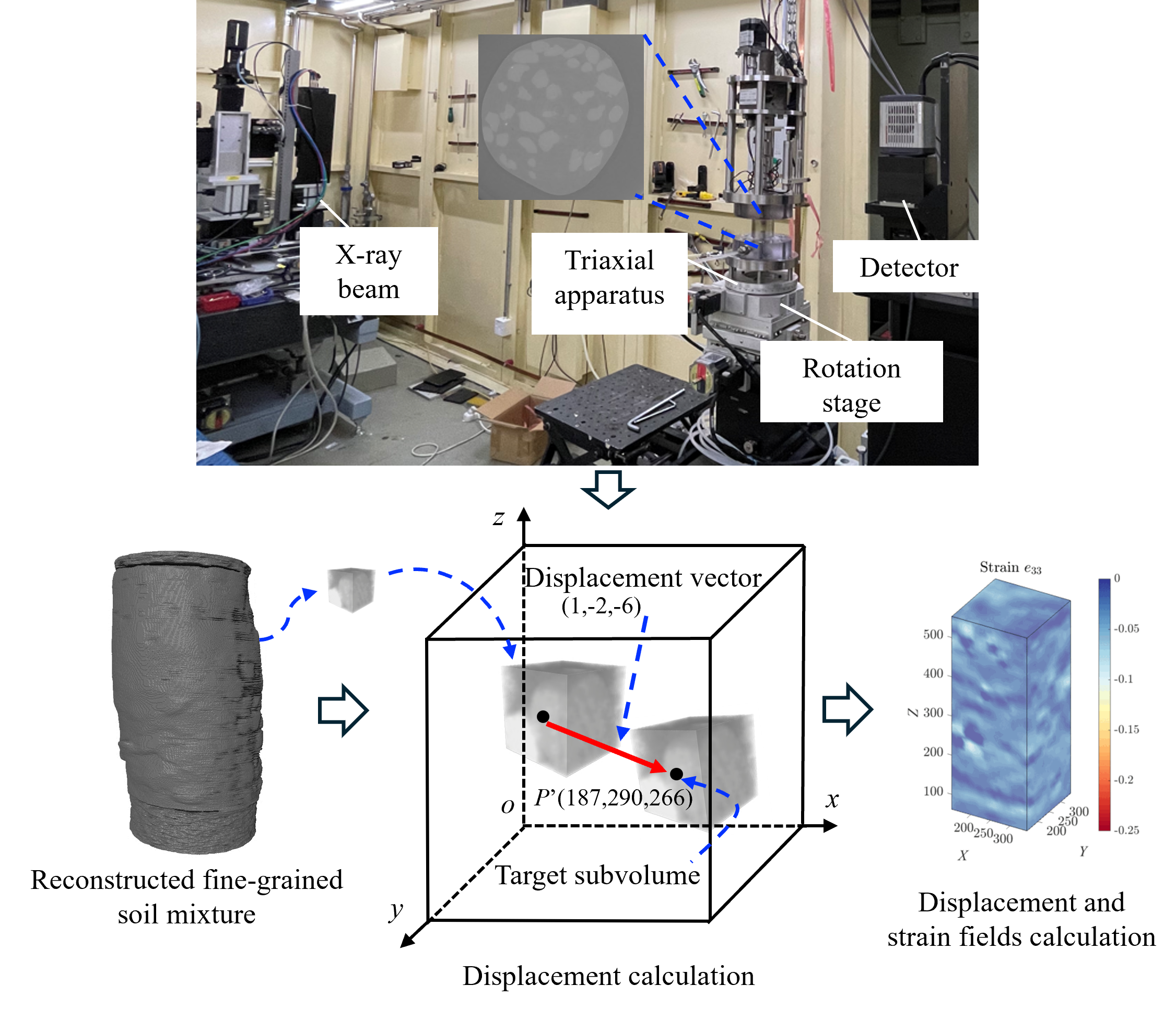Available on July 11, 2024 (click here)
Abstract: This study introduces a novel, interdisciplinary method that merges fundamental geomechanics with computer vision to develop an advanced hybrid feature-aided Digital Volume Correlation (DVC) technique. This technique is specifically engineered to measure and compute the full-field strain distribution in fine-grained soil mixtures. A clay-sand mixture specimen composed of quartz sand particles and kaolinite was created. Its mechanical properties and deformation behaviour were then tested using a mini-triaxial apparatus, combined with micro-focus X-ray Computed Tomography (μCT). The CT slices underwent image processing for denoising, segmentation of distinct phases, reconstruction of sand particles, and feature extraction within the soil specimen. The proposed approach incorporated a two-step particle tracking method, which initially uses particle volume and surface area features to establish a preliminary matching list for a reference particle and then use the Iterative Closest Point (ICP) method for precise target particle matching. The soil specimen's initial displacement field was then mapped onto the DVC method's grid, and further refined through subvoxel registration via a three-dimensional inverse compositional Gauss-Newton algorithm. The proposed method's effectiveness and efficiency were validated by accurately calculating the displacement and strain fields of the soil mixture sample, and comparing the results with those from a traditional DVC method. Given the soil's compositional and microstructural characteristics, these image-matching techniques can be integrated to create a versatile, efficient, and robust DVC system, suitable for a variety of soil mixture types.
